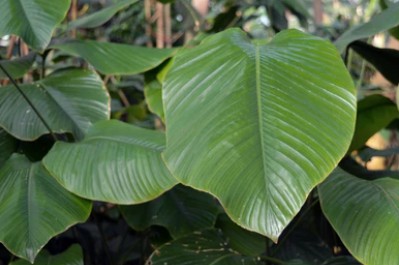
Thaumatin was isolated from the fruit of the West African tropical plant Thaumatococcus daniellii Benth in 1972. Thaumatin contains 207 amino acids and has a molecular weight of 22,200 Da. There are two major forms (I and II) and three minor forms (a, b, c). Only higher primates can taste thaumatin, a protein that tastes very sweet. Thaumatin is approximately 10,000 times sweeter than sugar on a molar basis. At present, thaumatin has been approved for use in food, medicine, and cosmetics in China, the United States, the United Kingdom, Japan, Germany, and other countries and regions. Due to the superiority of thaumatin in replacing traditional sugars, more and more scientists are trying to transfer it to plants.
Having worked on genetic modification for many years, Lifeasible deeply understands sweet proteins. Our scientists have developed an excellent system and advanced technology platform, which can provide customers with a one-stop thaumatin transgenic plant development service.
Our R&D service can help customers obtain thaumatin transgenic plants that induce a sweet phenotype and plant bioreactors that produce thaumatin. We typically use E. coli to clone and amplify the thaumatin gene. We use a binary vector to transfer the gene into an Agrobacterium strain and transform it into the target plant.
| Service Step | Service Content |
| Bacterial strains and plant materials | After the customer determines the plant species to be developed, we will prepare a thorough experimental plan based on this. This will include E. coli strains, Agrobacterium tumefaciens strains, vectors, reagents, etc. |
| Synthesize of thaumatin gene and vector construction | We will amplify and clone the restriction-site thaumatin gene, GenBank Registry Number: M21211.1, and then transplant it into E. coli for amplification. |
| Agrobacterium-mediated transformation and plant regeneration | Agrobacterium tumefaciens transforms the vector into a plant callus, subcultures it, and cultures it on a suitable medium. PCR identifies the regenerated plants. |
| Transgenic plant analysis (optional) | Southern blotting, Western blotting, and enzyme-linked immunosorbent assay (ELISA) can be used to determine whether thaumatin is correctly expressed in transgenic plants. Ion exchange chromatography and gel filtration can be used to purify thaumatin, taste testing can be performed to analyze thaumatin sweetness, and circular dichroism spectroscopy can be applied to analyze the thaumatin structure. |
Technical means: Agrobacterium-mediated transformation
Agrobacterium tumefaciens strains: A4T,CBE21,LBA4404,C58C1, etc.
Vectors: shuttle vector pWIT2,binary vector pGA482GG/35S-THA2-ocs3,binary vector pCAMBIA1301,pGEM B1, etc.
Plant types that can be transformed: tobacco (Nicotiana plumbagnifolia), rice (Oryza sativa), strawberry (Fragaria × ananassa), apple (Malus domestica), cucumber (Cucumis sativus), potato (Solanum tuberosum), pear (Pyrus communis), tomato (Solanum lycopersicum), carrot (Daucus carota subsp. sativus), celery (Apium graveolens), hyacinth (Hyacinthus orientalis), etc.
Delivery results: at least 10 T0 positive thaumatin transgenic plants, experimental data, pictures, standard genetic transformation experiment report.

Lifeasible is committed to overcoming all transgenic difficulties and providing you with a complete range of thaumatin plant solutions. For more information or cooperation intention, please feel free to contact us.
References
Lifeasible has established a one-stop service platform for plants. In addition to obtaining customized solutions for plant genetic engineering, customers can also conduct follow-up analysis and research on plants through our analysis platform. The analytical services we provide include but are not limited to the following:
STU-CRISPR System Improves Plant Genome Editing Efficiency
April 19, 2024
Application of Exosomes in Facial Beauty
April 12, 2024